Social robots for elder care
Engineers develop a ‘magnetic tentacle robot’ to pass into the narrow tubes of the lung
Using Rubik’s cube to improve and evaluate robot manipulation
FORD NOW OPERATES 3D PRINTERS AUTONOMOUSLY, INCREASING EFFICIENCY AND REDUCING COST
BirdBot is energy-efficient thanks to nature as a model
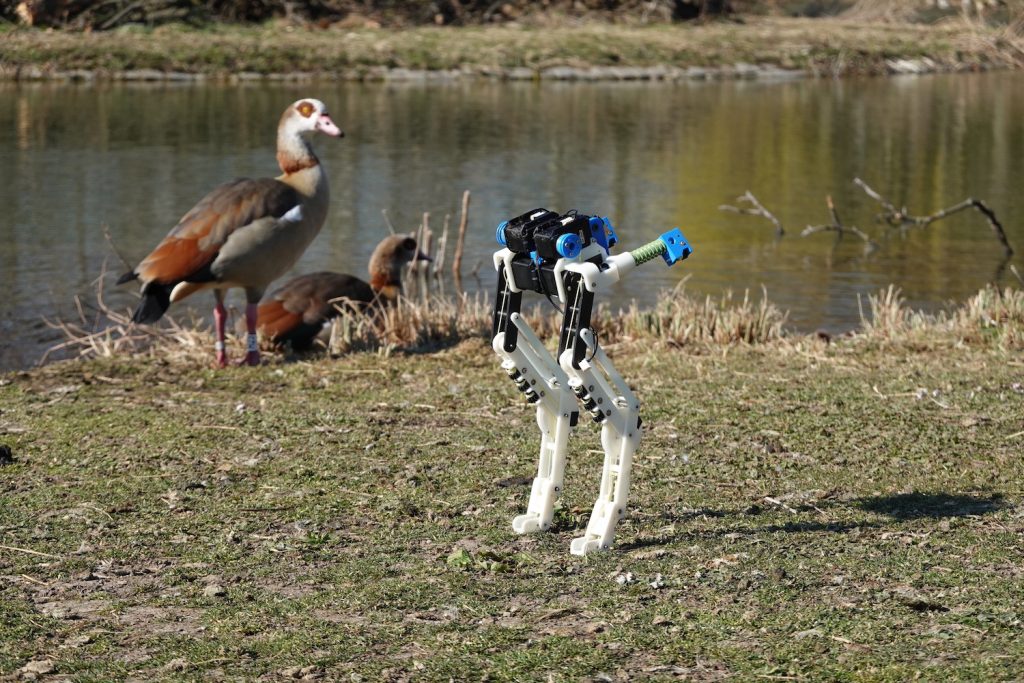
By Alexander Badri-Sprowitz, Alborz Aghamaleki Sarvestani, Metin Sitti and Linda Behringer
If a Tyrannosaurus Rex living 66 million years ago featured a similar leg structure as an ostrich running in the savanna today, then we can assume bird legs stood the test of time – a good example of evolutionary selection.
Graceful, elegant, powerful – flightless birds like the ostrich are a mechanical wonder. Ostriches, some of which weigh over 100kg, run through the savanna at up to 55km/h. The ostrich’s outstanding locomotor performance is thought to be enabled by the animal’s leg structure. Unlike humans, birds fold their feet back when pulling their legs up towards their bodies. Why do the animals do this? Why is this foot movement pattern energy-efficient for walking and running? And can the bird’s leg structure with all its bones, muscles, and tendons be transferred to walking robots?
Alexander Badri-Spröwitz has spent more than five years on these questions. At the Max Planck Institute for Intelligent Systems (MPI-IS), he leads the Dynamic Locomotion Group. His team works at the interface between biology and robotics in the field of biomechanics and neurocontrol. The dynamic locomotion of animals and robots is the group’s main focus.
Together with his doctoral student Alborz Aghamaleki Sarvestani, Badri-Spröwitz has constructed a robot leg that, like its natural model, is energy-efficient: BirdBot needs fewer motors than other machines and could, theoretically, scale to large size. On March 16th, Badri-Spröwitz, Aghamaleki Sarvestani, the roboticist Metin Sitti, a director at MPI-IS, and biology professor Monica A. Daley of the University of California, Irvine, published their research in the renowned journal Science Robotics.
Compliant spring-tendon network made of muscles and tendons
When walking, humans pull their feet up and bend their knees, but feet and toes point forward almost unchanged. It is known that Birds are different — in the swing phase, they fold their feet backward. But what is the function of this motion? Badri-Spröwitz and his team attribute this movement to a mechanical coupling. “It’s not the nervous system, it’s not electrical impulses, it’s not muscle activity,” Badri-Spröwitz explains. “We hypothesized a new function of the foot-leg coupling through a network of muscles and tendons that extends across multiple joints”. These multi-joint muscle-tendon coordinate foot folding in the swing phase. In our robot, we have implemented the coupled mechanics in the leg and foot, which enables energy-efficient and robust robot walking. Our results demonstrating this mechanism in a robot lead us to believe that similar efficiency benefits also hold true for birds,” he explains.
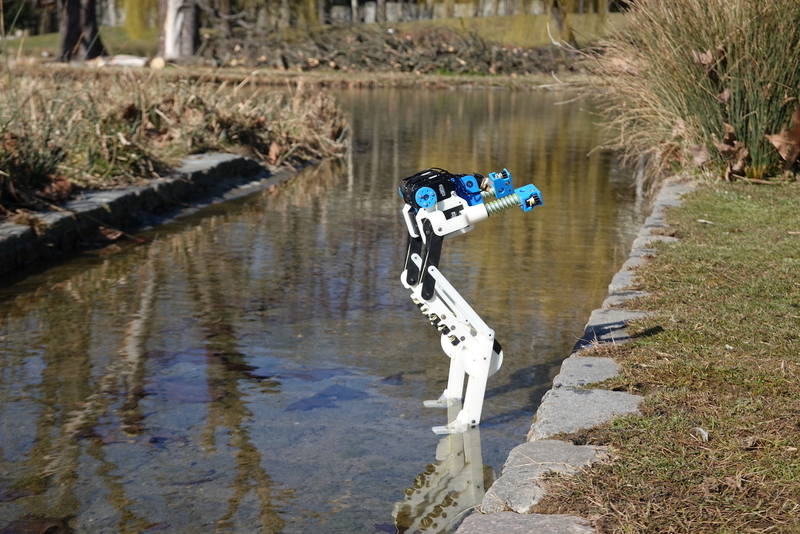
The coupling of the leg and foot joints and the forces and movements involved could be the reason why a large animal like an ostrich can not only run fast but also stand without tiring, the researchers speculate. A person weighing over 100kg can also stand well and for a long time, but only with the knees ‘locked’ in an extended position. If the person were to squat slightly, it becomes strenuous after a few minutes. The bird, however, does not seem to mind its bent leg structure; many birds even stand upright while sleeping. A robotic bird’s leg should be able to do the same: no motor power should be needed to keep the structure standing upright.
Robot walks on treadmill
To test their hypothesis, the researchers built a robotic leg modeled after the leg of a flightless bird. They constructed their artificial bird leg so that its foot features no motor, but instead a joint equipped with a spring and cable mechanism. The foot is mechanically coupled to the rest of the leg’s joints through cables and pulleys. Each leg contains only two motors— the hip joints motor, which swings the leg back and forth, and a small motor that flexes the knee joint to pull the leg up. After assembly, the researchers walked BirdBot on a treadmill to observe the robot’s foot folding and unfolding. “The foot and leg joints don’t need actuation in the stance phase,” says Aghamaleki Sarvestani. “Springs power these joints, and the multi-joint spring-tendon mechanism coordinates joint movements. When the leg is pulled into swing phase, the foot disengages the leg’s spring – or the muscle-tendon spring, as we believe it happens in animals,” Badri-Spröwitz adds. A video shows BirdBot walking in the research group’s laboratory.
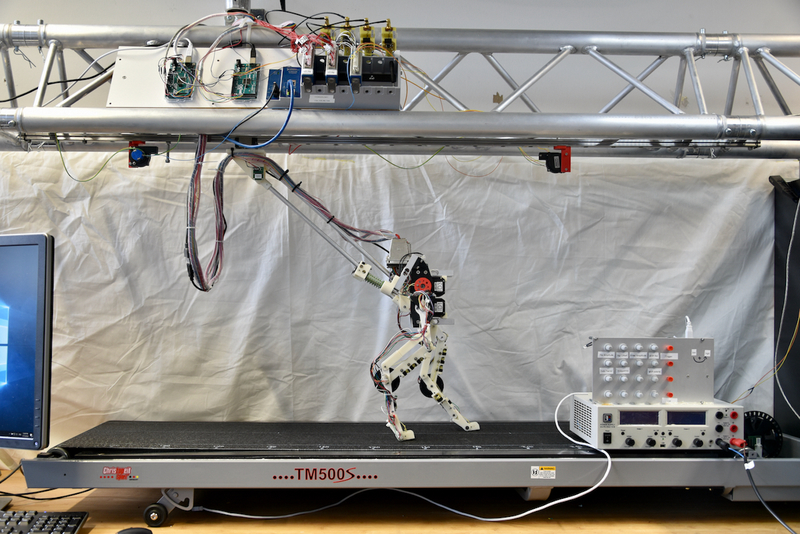
Zero effort when standing, and when flexing the leg and knee
When standing, the leg expends zero energy. “Previously, our robots had to work against the spring or with a motor either when standing or when pulling the leg up, to prevent the leg from colliding with the ground during leg swing. This energy input is not necessary in BirdBot’s legs,” says Badri-Spröwitz and Aghamaleki Sarvestani adds: “Overall, the new robot requires a mere quarter of the energy of its predecessor.”
The treadmill is now switched back on, the robot starts running, and with each leg swing, the foot disengages the leg’s spring. To disengage, the large foot movement slacks the cable and the remaining leg joints swing loosely. This transition of states, between standing and leg swing, is provided in most robots by a motor at the joint. And a sensor sends a signal to a controller, which turns the robot’s motors on and off. “Previously, motors were switched depending on whether the leg was in the swing or stance phase. Now the foot takes over this function in the walking machine, mechanically switching between stance and swing. We only need one motor at the hip joint and one motor to bend the knee in the swing phase. We leave leg spring engagement and disengagement to the bird-inspired mechanics. This is robust, fast, and energy-efficient,” says Badri-Spröwitz.
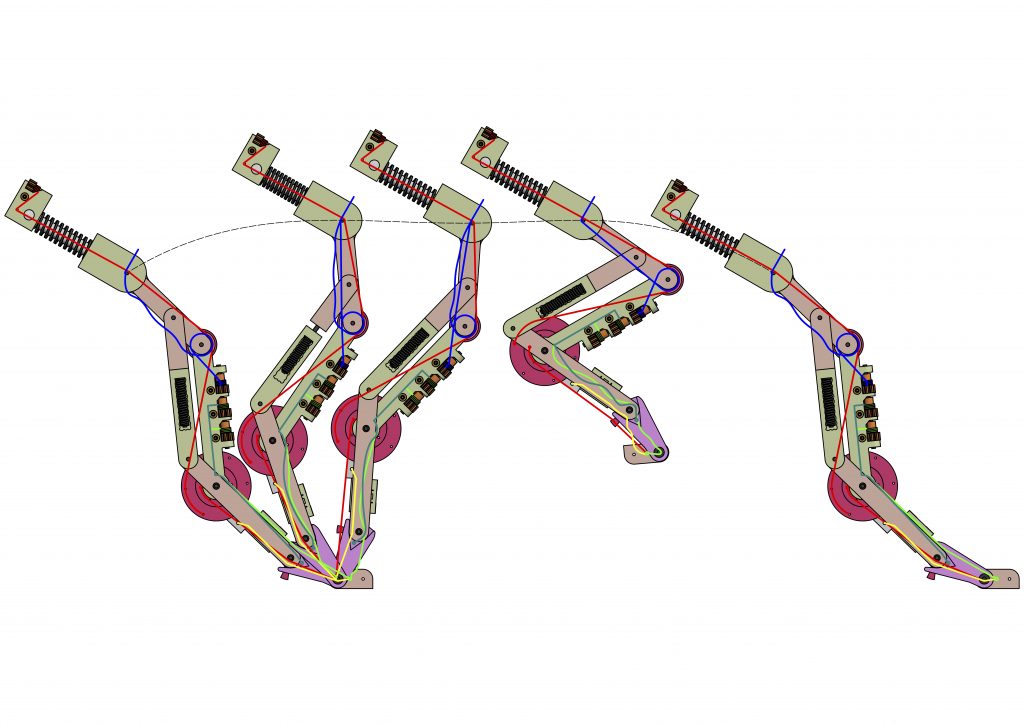
Motion sequence of BirdBot’s leg; left is touch-down, then stance (the three first snapshots on the left), then mid-swing with the leg’s characteristic leg flexing posture, and back to touch-down on the right. Springs and spring-tendons are shown on top.
Monica Daley observed in several of her earlier biology studies that the bird’s leg structure not only saves energy during walking and standing but is also adapted by nature so that the animal hardly stumbles and injures itself. In experiments with guineafowls running over hidden potholes, she quantified the birds’ remarkable locomotion robustness. A morphological intelligence is built into the system that allows the animal to act quickly – without having to think about it. Daley had shown that the animals control their legs during locomotion not only with the help of the nervous system. If an obstacle unexpectedly lies in the way, it is not always the animal’s sense of touch or sight that comes into play.
“The structure with its multi-jointed muscle-tendons and its unique foot movement can explain why even heavy, large birds run so quickly, robustly, and energy-efficient. If I assume that everything in the bird is based on sensing and action, and the animal steps onto an unexpected obstacle, the animal might not be able to react quickly enough. Perception and sensing, even the transmission of the stimuli, and the reaction cost time,” Daley says.
Yet Daley’s work on running birds over 20 years demonstrates that birds respond more rapidly than the nervous system allows, indicating mechanical contributions to control. Now that the team developed BirdBot, which is a physical model that directly demonstrates how these mechanisms work, it all makes more sense: the leg switches mechanically if there is a bump in the ground. The switch happens immediately and without time delay. Like birds, the robot features high locomotion robustness.
Whether it’s on the scale of a Tyrannosaurus Rex or a small quail, or a small or large robotic leg. Theoretically, meter-high legs can now be implemented to carry robots with the weight of several tons, that walk around with little power input.
The knowledge gained through BirdBot developed at the Dynamic Locomotion Group and the University of California, Irvine, leads to new insights about animals, which are adapted by evolution. Robots allow testing and sometimes confirming hypotheses from Biology, and advancing both fields.
Decoding brain signals to control a robotic arm
ABB predicts key trends that will change robotic automation in 2022
3 Questions: How the mini cheetah robot learns to run
Vimaan CEO Reflects on Coming Out of Stealth
Boosting innovations and maximising societal impact. Role of Digital Innovation Hubs in Inspection & Maintenance robotics
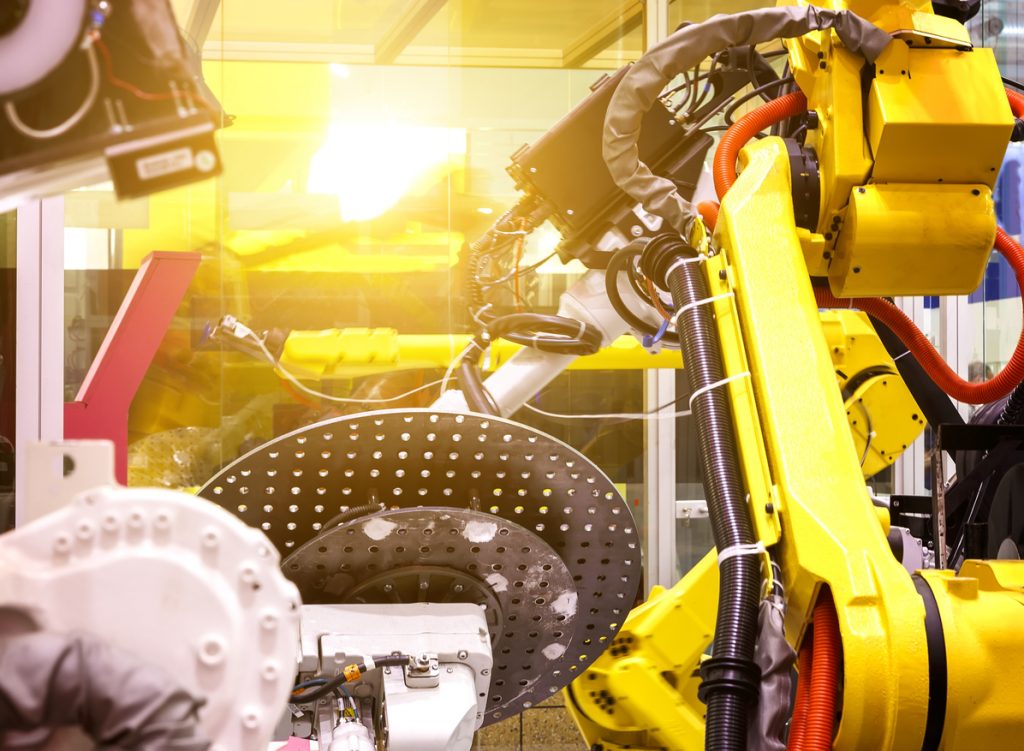
By Jovita Tautkevičiūtė
Robotics4EU is a 3-years-long EU-funded project which advocates for the wider adoption of AI-based robots in 4 sectors: healthcare, inspection and maintenance of infrastructure, agri-food, and agile production. Thus, one of the ways in which Robotics4EU raises awareness about non-technological aspects in robotics is delivering a series of workshops to involve the research community, industry representatives and citizens.
The workshop “Boosting innovations and maximising societal impact. Role of Digital Innovation Hubs (DIHs) in I&M Robotics” which took place on the 23rd of February, 2022 analysed the role and contribution of Digital Innovation Hubs (DIHs) to the widespread adoption of robotics in society. How can they enhance the implementation of robotics by SMEs and startups into their daily operations? How can they help to close the knowledge gap of non-technological issues of robotics in Inspection & Maintenance (I&M)?
These questions were analysed by five experts: Ebert von Vonderen, Ladislav Vargovcik, Maria Roca, Roi Rodriguez de Bernardo and Christophe Leroux, during the presentations and panel discussions of the workshop.
Digital Innovation Hubs
What is Digital Innovation Hub (DIH) and what role does it play? Ebert van Vonderen & Ladislav Vargovcik from DIH Robotics Hub Košice explained what DIH is and how it works with various stakeholders: universities, DIH network, SMEs. In general, DIH serves as a bridge between research organizations and industry – technology and services providers, end-users and SMEs. In the case of DIH Robotics Hub Košice, technical faculties of Košice University, Prototyping and Innovation Center established the DIH.
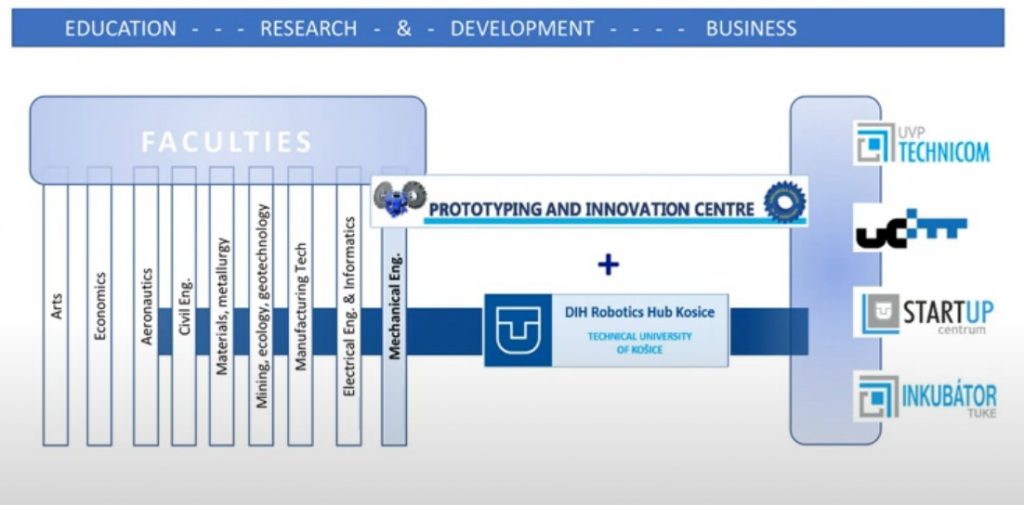
Structure of DIH Robotics Hub Košice
A DIH serves as a one-stop-shop for SMEs to bring their questions. DIHs need to ensure that SMEs have easy access to technology innovation, are provided with relevant services and training for technology adoption. Thanks to the efforts of the RIMA network, DIHs are spread over Europe and interact for I&M possibilities, competencies, and share the available opportunities across Europe.
Why are Robotics DIHs important for SMEs? They tackle many challenges that arise for companies, aiming to boost innovation, enhance and contribute to robotics implementation. Some of the challenges mentioned by Ebert van Vonderen:
- High technology levels needed, complex tasks in I&M
- High Investments needed
- Competition, profitability, ROI (profitability is in many cases a problem)
- Ecosystem maturity, differences across Europe
- Resistances from communities
- Creation of sustainable solutions
An example of DIH Robotics Hub Košice’s cooperation with INETEC, high tech company that specialises in robotics, instruments and software was presented. Magic Lancer II – a robot for nuclear inspection, was developed under the cooperation of DIH Robotics Hub Košice.
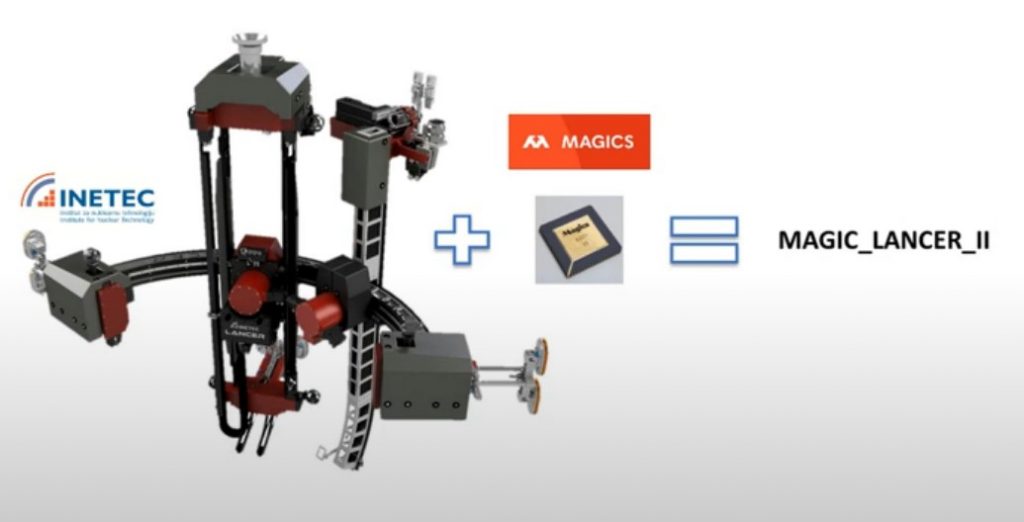
Screenshot of the Magic Lancer II presentation
How to enhance the uptake of technology?
Christophe Leroux, representing RIMA (Robotics for Inspection & Maintainance) Network explained that RIMA Network connects and inspires key stakeholders in I&M robotics and aims to accelerate innovation and uptake of robotics between these stakeholders. Its main purpose is to help digitalise European Industry. Even though the market is estimated with a huge potential for innovation (450 bn EUR/year), the bottleneck is the adoption of robotics to market – no real connection between industry and research organisations.
RIMA Network directs its efforts to establish a network of DIHs (currently, it connects 13 DIHs), focussing on robotics in I&M, fund SEMs to support experimentation, set up courses to facilitate the uptake of technologies and develop new skills, and inform people of funding opportunities for business development.
RIMA network supports SMEs by organising open calls. 15 innovative solutions were supported, with the aim to have a social-economic impact win EU with new products, services, business, established jobs, along with the reduction of costs and risks. RIMA Network provides the following services to SMEs and research organisations:
- Advising (on finances, technology)
- Proof of Concept
- Support for tech transfer
- Support for testing
- Access to Incubator’s
- Access to value chain actors
- Training and coaching
- The market study, providing information to network partners

RIMA Network Objectives
ICT innovation for manufacturing SMEs
Maria Roca, I4MS Project Manager, presented I4MS (ICT Innovation for Manufacturing SMEs). It is the initiative promoted by the European Commission to foster the digital innovation of manufacturing SMEs in Europe in order to boost their competitiveness in the digital era. The I4MS goal is to contribute to the adaptation of European SMEs to the current digital transformation challenges by funding & mentorship, training and access to physical and virtual technology platforms. I4MS connects a community of 1700 members, 42% of them – SMEs. According to Maria Roca, the organisation has identified that geographical coverage of Europe is uneven and Eastern European countries need to be represented better in the network. Also, there is a gap in SMEs ’ understanding of technology advantages and network ability to consider SMEs’ interests.
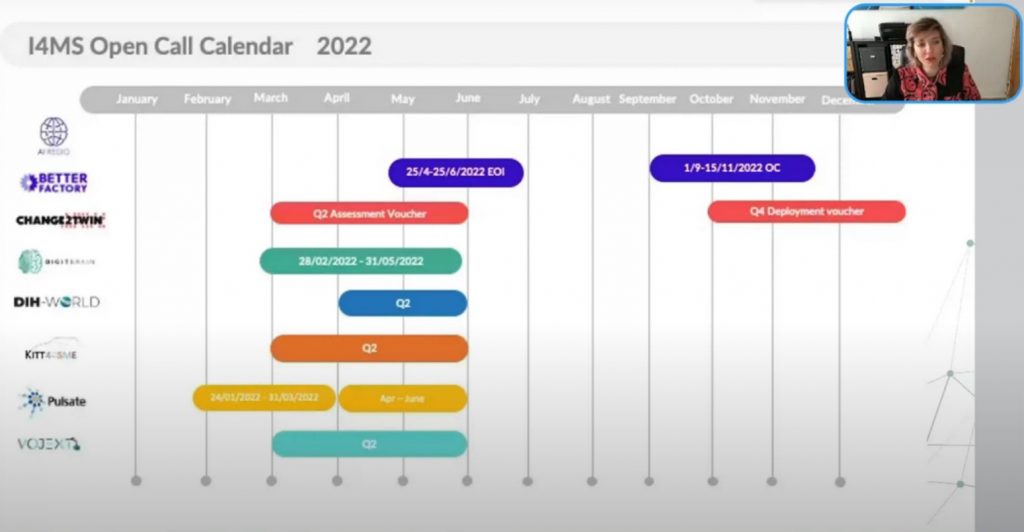
Screenshot from Maria’s Roca presentation on I4MS and Open Call Calendar
Roi Rodriguez de Bernardo, Program Manager at FundingBox presented the AI4EU platform and funding opportunities for SMEs. AI4EU is a collaborative H2020 Project that aims to:
- mobilize the entire European AI community to make AI promises real for the European Society and Economy, and
- create a leading collaborative AI European Platform to nurture economic growth.
AI4EU aims to be a catalyst between research and industry. The platform presents available funding opportunities and various tools (research, education, ethics, services).
Speaking of the funding opportunities, Roi set the scene by capturing Europe’s position in the global AI market. The AI Business market is emerging worldwide with an estimated growth of the AI market from 40,2% CAGR from 2021 to 2028. The growing focus on AI is also evident in the EU strategy. AI strategy, set by EC offers yearly 1bn EUR funding for a period of 2021-2028, expecting to leverage 20bn EUR investments. The funding is focused on SMEs adopting AI with some cases of funding for startups or technology providers developing AI solutions that could be adopted by SMEs.
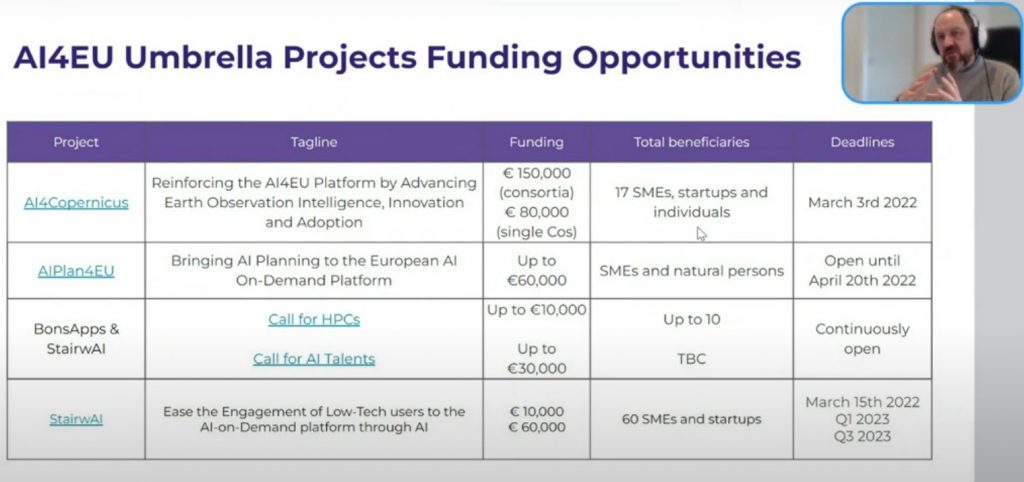
Screenshot from Roi Rodriguez de Bernardo presentation presenting Funding opportunities and open calls
Panel discussion
The discussion started with the question of whether the EU can be a powerhouse of robotics in I&M and lead the way in the race with the USA and China, also adhering to our values? It was identified that record-high investment in the industry in 2021 shows that it is possible. Even though the USA and China did not take into account the ethical aspects EU holds, they are starting to develop regulation as well. It seems that the path set by the EU is followed now by other big markets.
Considering ethical or socio-economic aspects of most importance in the field, Maria Roca identified the management of data for SMEs as a bottleneck. The difficulty lies in the hindrances to sharing data with other companies. Further, in the case of AI, ethical aspects are evaluated in all EU funded projects. From the perspective of DIH’s provided services, RIMA’s representative Christophe Leroux explained that ethical and safety aspects are taken into account in facilitated experimentation. In practice, ethical assessment is conducted for each experimentation, involving experts in the field of ethics. On a daily basis, RIMA’s work includes mentorship on ethical issues and guidelines.
The ways of enlarging the networks were also discussed. Maria Roca identified training as a main tool to attract members and showcase what they can achieve in collaboration and participation in their open calls. Networking, as a core business of DIHs, also covers the organisation of local events with experts. Also, collaboration with social scientists was emphasised as crucial in the field of AI. Annelli Rose, representative of the Robotics4EU project noted that interdisciplinary collaboration is in line with the EU priorities, where the change is foreseen to have a breeding ground.
Zooming in to the topic of robotics in I&M the social aspect of adoption was analysed. Christophe Leroux explained that there is attractiveness for robotics adoption to support certain operations because there is not much fear of losing jobs. Robots are seen as supporting their work, for example as deploying robotics in explosive, dangerous and hazardous environments. Robots are not taking away jobs, but taking away the danger. Christophe Leroux also emphasised that there is a growth in the domain of AI robotics in I&M and the main issues are related to trust and safety.
Upcoming workshop
The upcoming workshop on the 23rd of March 2022, 11-14 CET “How to make sure regulation helps and not hinders I&M robotics? Policy issues in Robotics for Inspection & Maintenance”. We will discuss how cooperation among regulators and the robotics community can be fostered and what are the most pressing legal challenges for the I&M application area of robotics. We will be investigating how to ensure the accessibility of objective information and enhance the capacity of regulators to comprehend technical aspects, risks and opportunities of robotics in I&M. We hope to leave the workshop with industry insights and specific areas for improvement for the future, which as a project we will continue to explore in our activities. Register here.